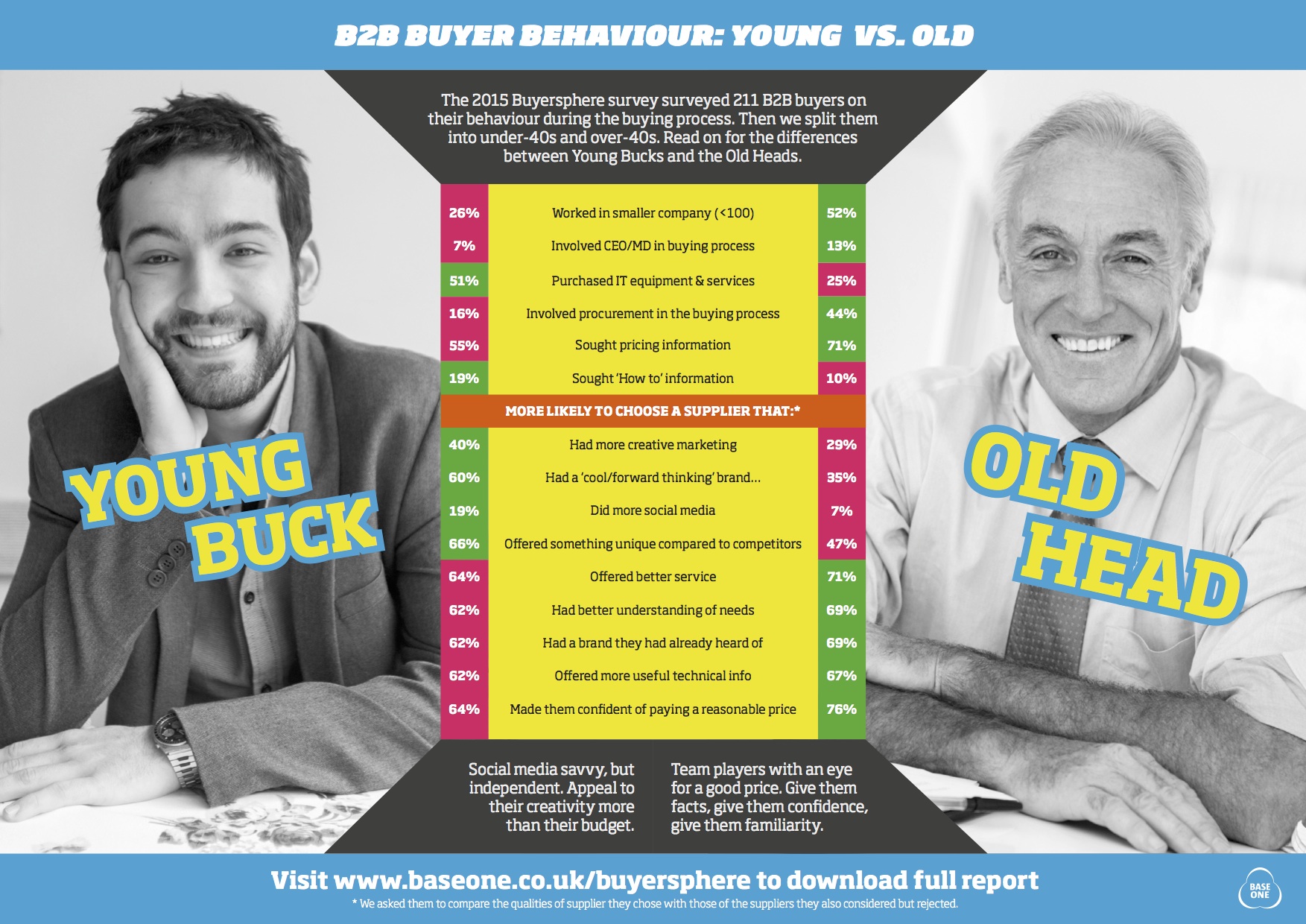How do younger B2B buyers act differently to older B2B buyers?
March 05 2015 11:54 AM
Older buyers are world-weary, politically incorrect and dismissive of social media. Younger buyers are excitable, naive and generally puppy-like. Maybe. But the Buyersphere 2015 Report gives us the facts...
Our Buyersphere 2015 Report asked 211 B2B buyers about their behaviour during the buying cycle – what they did, what they felt, what information they sought, etc. The major findings have been published in a full report and discussed in a recent webinar – but we also thought this was an opportunity to separate responses from different types of buyer and ask the question: do younger buyers differ from older buyers? And, if so, how?
The graphic below presents and compares some of the stats (or you can download a higher-quality pdf here).
But what do these findings mean? Using data from a survey like this can only possibly give us generalisations. But if those sweeping conclusions point to something worthy of further investigation, it can ultimately be priceless. My generalised take is therefore as follows:
Older buyers work in smaller companies. 52% of over-40s worked in companies with fewer than 100 employees; only 26% of the under-40s surveyed did so. This is probably because, in smaller companies, buying decisions are often made by the boss (because there are fewer people to delegate to) and we all know that bosses tend to be older. Fairly obvious - but how often does your SME marketing take account of age differences compared to enterprise buyers? It might be a good idea to understand that small companies are not necessarily young companies – and that a traditional approach might pay dividends.
Younger buyers are more independent. The research shows that older buyers are more likely to involve the CEO and procurement experts in the buying process. This is possibly because they ARE the CEO (because they work in a smaller company). But equally, this might be an indication of the willfulness of youth...
Older buyers like facts; younger buyers like style. This is an enormous generalisation – but there might be a grain of truth in it, which might help you shape better messages to these different groups. But the Buyersphere stats show that younger buyers are more likely to choose a supplier that:
- had more creative marketing
- had a 'cool/forward-thinking' brand
- offered something unique compared to competitors
...whereas the seasoned campaigners expressed a preference for suppliers who:
- offered better service
- had better understanding of needs
- offered more useful technical info
- made them confident of paying a reasonable price
If you are able to separate the groups, this may help you shape your communications to be more effective.
Older buyers are more price-sensitive. The research shows that 71% of over-40s sought pricing information, compared to 55% of under-40s.
Younger buyers need more explanation. You knew this already, but Buyersphere stats show that younger buyers were almost twice as likely to request 'how-to' information (19% compared to 10%). You might, for example, take steps to ensure that guides and 101 introductions are available on social media – where the younger buyers are more likely to find them.
Caveat emptor: beware of buyer data
It's difficult – and potentially dangerous – to leap to conclusions. But some of the findings above may highlight some opportunities for you in your market. Next time you undertake any kind of audience analysis or persona work, maybe take a look at what you know about your audience. Understanding the differences between older and younger buyers could give you a real edge over competitors who think every buyer is an average.
B2B audiences can be incredibly diverse. But do you understand what really makes them tick? Let Base One show you how to get under the skin of your buyers - and really understand what they're looking for.
Get in touch using our online form, or call John Bottom on 020 8943 9999.



No Comments